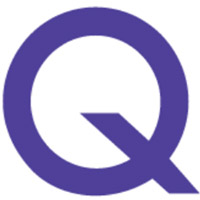
Gartner’s Hype Cycle Report, which looks at new technologies as they make their way through the inevitable gauntlet of media hype, is now in its 20th year.
The various stages are aptly named, and many tech observers are painfully familiar with the early ones. The hype cycle starts with innovation, rapidly moves into the peak of inflated expectation, and then sinks in the trough of disillusionment.
Finally come the slope of enlightenment and the plateau of productivity.
Gamification is one of a handful of technologies now sliding into the trough of disillusionment.
It is a particularly easy technology for people to dismiss — perhaps because it evokes images of hours of productivity devoured by Angry Birds, or perhaps because the initial business case was too simplistic.
However, I am willing to bet that like the other technologies it’s rubbing shoulders with on Gartner’s current graph — augmented reality and mobile health monitoring, to name a few — gamification will come out of its slump stronger and better than it was in its early days.
CRM Leaps Over the Trough
Driving that transformation will be the new ways gamification is used in CRM.
Gamification has become a solid feature in many applications — Gartner’s trough of disillusionment is nowhere to be seen in this particular tech segment.
It started like this: Gamification, by tickling users’ competitive instincts, drove adoption of certain internal tasks such as entering contacts correctly or working on group projects.
Badges and contests and leaderboards are all part of the toolset used to get the sales team to complete certain tasks. In black and white, these incentives may seem a little ridiculous, but studies have proven that they work.
A number of vendors have incorporated gamification as a core design principle. Examples include Hoopla, Fantasy Sales Team, CloudApps, HelloWorld (formerly ePrize) and Zurmo.
New Uses
Now companies are recognizing that gamification can be used in other CRM-related scenarios. Starbucks, for example, built out its vaunted digital and mobile loyalty program in large part due to its COO Stephen Gillett’s strong gaming creds.
He describes himself on his resume as a “level 70 paladin and priest with a particular focus on healing abilities” — a reference to his World of Warcraft expertise, according to CNN.
Gillett formed Starbuck’s Digital Ventures business unit and from there guided the company in gamifying the consumer purchase experience to rave reviews.
Other consumer-facing companies are borrowing bits and pieces of this lesson now — and they will need supporting technology as their efforts become more elaborate. Not everyone can launch a new business unit, after all.
Take eBags, for example, which earlier this month introduced a gaming tool that has led to a 10 percent mobile conversion rate, according to Internet Retailer. It shows users pictures of bags, asking them “hot or not?”
Hermes has introduced to its app a gamified element that helps men pick just the right tie for any occasion, according to PopSop.
Learning and More Learning
A more serious use case is provided by Qstream — and its application has far wider ramifications than driving consumers to make a purchase or sales people to fill out all the fields in their CRM applications.
Qstream is a gamification-based app that helps sales reps learn complex sales-related content. It is typically deployed following a training event, with the company sending basic questions about the presented content to a sales rep’s mobile device or email address.
If the rep returns correct answers, Qstream then sends over another series of questions on content covered in the training event. If the rep returns incorrect answers, the app explains why. Then, a few days later, it requizzes the rep.
Studies have shown that this approach works. Backing them up are deployments by medical device and pharmaceutical companies — entities that really need their reps to be on the ball with new information.
There are glimmers that this model is catching on in another sphere — financial services — and if the feedback is as positive as it has been in the healthcare community, gamification will become a de rigueur element of compliance.
Why do I say this? Regulators increasingly are including successful training as they evaluate banks and financial institutions — and if there is one thing Qstream’s version of gamification can provide, it is measurable proof of its training program’s success.























































